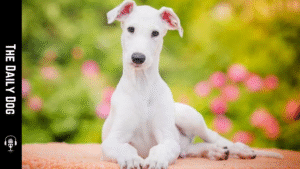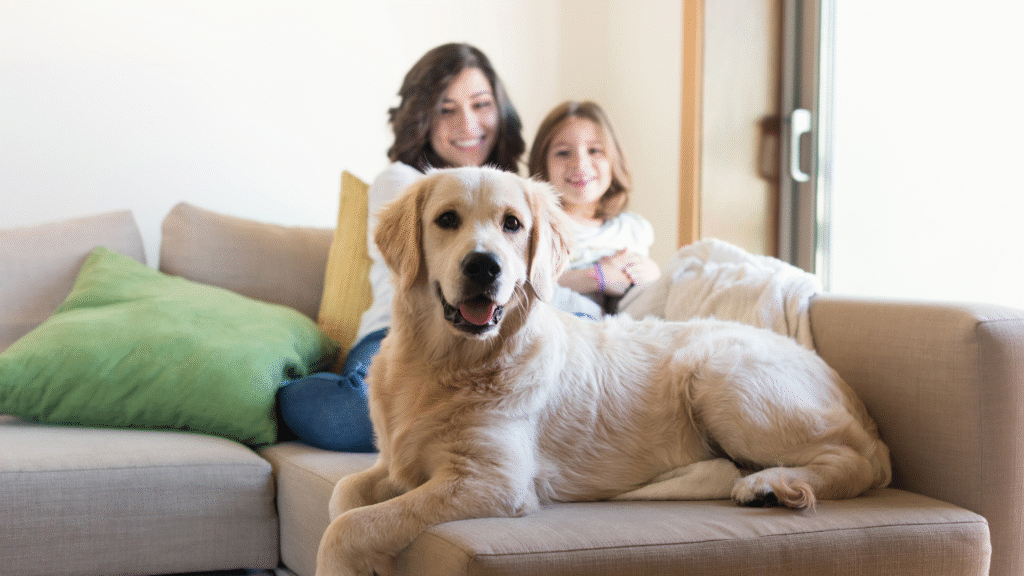A prosperous Alaska family juggles a lot: demanding jobs, kids’ schedules, seasonal travel, and a dog who’s supposed to be part of the calm, not the chaos. When behavior issues pop up, such as leash reactivity, anxiety, jumping on guests, or resource guarding, it’s tempting to “just try something inexpensive and quick” to get through the week. We get it.
But here’s the truth we’ve seen repeatedly at Alaska Dog Works: cheap training is often the most expensive choice once you factor in the fallout, worsened behavior, emergency vet bills, damage to your home, potential liability, and, in heartbreaking cases, rehoming. Bargain programs rarely account for the realities of Alaska living or the complexity of modern family life. The result is predictable: short-term promises, long-term problems.
This article unpacks the hidden costs of low-quality training. It contrasts them with the durable results you can expect when you invest in a proven, professional program designed for Alaskan families who need real outcomes, not temporary patches.
What “Cheap Training” Usually Means
“Cheap” isn’t just about price. It’s a set of tradeoffs:
- High volume, low attention. Overcrowded classes or assembly-line board-and-train where your dog is a number, not an individual.
- One-size-fits-all protocols. The same cue list for every dog, regardless of temperament, history, or environment.
- Minimal handler coaching. Little to no transfer of skills to the family, so the dog performs for the trainer but not for you.
- No structured behavior modification. Basic obedience is offered as a “fix” for fear, anxiety, or aggression, issues that require deeper work.
- Low proofing and generalization. Dogs practice “sit” in a quiet room, then fall apart in real-world Alaskan scenarios: the trailhead, the school pickup lane, or a visiting friend’s cabin.
- Outdated or extreme methods. Either harsh, poorly timed aversive stimuli that create fallout (fear, shutdown, new aggression) or purely permissive approaches that ignore clear boundaries and safety.
The common denominator: shortcuts. And shortcuts in training show up as long detours in life.
The Bill Comes Later: Hidden Costs That Families Don’t Expect
1) Worsened Behavior = Bigger Problems
When underlying emotions (fear, anxiety, frustration) go unaddressed, you often get behavior escalation. The dog that once “just barked at the window” now charges the door. The puppy who “only nipped” is now guarding the couch. When cheap programs throw obedience cues at an emotional problem, the dog learns to hold it together for a moment, then explodes later in environments that matter to you.
Hidden cost: Longer timelines to fix the behavior once it’s more entrenched, plus additional stress for the family and less trust in the dog.
2) Emergency Vet Bills
Low-quality programs frequently mishandle reactivity or aggression: poorly managed dog-dog “socialization,” chaotic playgroups, or forced proximity to triggers. We hear it weekly: a “budget” day program led to a scuffle; a rushed e-collar protocol created oral injuries or stress ulcers; a slip on the ice during an unstructured field trip resulted in a sprain.
Hidden cost: Hundreds to thousands in vet care, money that could have funded a complete, professional training plan from the start.
3) Property Damage and Opportunity Costs
A dog left untrained or improperly managed chews baseboards, scratches doors, ruins flooring, or shreds ski gear. That’s visible money. Less visible: the trips you cancel because your dog can’t handle a cabin weekend, or the sitters who refuse to watch your dog because of biting risk. The family sacrifices experiences to manage a problem that “cheap training” never truly addressed.
Hidden cost: Remodeling, replacement purchases, lost deposits, higher boarding fees, or simply fewer family adventures.
4) Liability and Safety Risks
In Alaska, your dog’s behavior doesn’t just affect your household; it affects neighbors, trail users, wildlife, delivery drivers, and visiting friends. An unaddressed bite risk or threshold-sensitive dog turns regular life into a liability minefield. If “budget” training suppresses warning signals (growl, freeze) without resolving the emotion, bites can surface suddenly and more severely.
Hidden cost: Medical bills, potential legal exposure, increased insurance scrutiny, and the emotional weight of an incident that could have been prevented.
5) Rehoming or Surrender
The most devastating cost is giving up a dog who might have stayed in the family with skilled intervention. We work with clients who have tried a quick fix, only to see things worsen, feel ashamed, and wait too long to ask for help. When rehoming happens, families lose not just money, but the future they imagined: fishing trips, winter hikes, evening routines that work.
Hidden cost: Grief, guilt, family conflict, and the painful conversation with your kids.
Why Bargain Programs Often Backfire, From a Training Science Perspective
They Treat Symptoms, Not Causes
Obedience is a surface skill. Behavior is an expression of an underlying state. Without addressing arousal thresholds, trigger stacking, reinforcement history, and stress hormone recovery, you’re painting over a crack in the foundation.
They Don’t Transfer Skills to the Family
Your dog lives with you, not the trainer. If a program doesn’t invest in structured handler coaching, home routines, and ongoing accountability, behaviors fall apart where they matter most: at your house, with your kids, in your neighborhood.
They Fail to Generalize Under Real-World Conditions
A dog that can perform a cue in a quiet room may fall apart at a windy trailhead in January or when a moose crosses the road. Proofing must be deliberate, progressive, and context-specific to Alaska.
They Use Tools Without Teaching Timing
Any tool, leash, harness, head collar, prong, e-collar, or food requires timing, criteria, and a plan. Cheap programs often deploy tools as a magic switch, rather than as part of a system that steadily reduces dependence and increases reliability.
The Alaska Factor: Why Local Context Matters
Life up here is different. Darkness, ice, wildlife, visitors arriving in seasonal bursts, tight indoor spaces, and active families who want a dog that can truly go anywhere. Programs designed for generic suburban parks often fail to adapt to Alaskan terrain.
At Alaska Dog Works, we design training for:
- Seasonality: Your dog must handle winter gear, snow machines, slick surfaces, and cabin life.
- Wildlife and trail etiquette: Reliable recalls and calm behavior around other dogs, skiers, and hikers.
- Family logistics: Kids, guests, delivery drivers, and weekly rhythms that change with the season.
- Travel and boarding reality: Your dog needs consistency even when you’re out of town or at a tournament.
When a program ignores these realities, you’re stuck rebuilding from scratch later, paying twice and still behind.
Case Studies: How Cheap Became Costly
Case 1: The “Quick Board-and-Train”
A well-meaning Anchorage family chose a low-cost, two-week board-and-train for their adolescent Labrador who pulled on leash and barked at windows. The program used heavy suppression around barking but never addressed arousal or trigger exposure. At home, the dog stopped “warning” and launched straight into door-charging when guests arrived, now with teeth. One minor bite, a vet bill for the houseguest, and a panic-driven call to us followed.
Outcome after professional work: We rebuilt door protocols, installed impulse-control games, desensitized to window traffic, and transferred handling skills to both adults. Six weeks later, the dog greeted at a mat with quiet focus. Costly? Yes. But less expensive than the incident becoming a lawsuit, or a rehome.
Case 2: The “Budget Group Class”
A family with an anxious herding mix tried a crowded, low-priced class. The dog rehearsed reactivity weekly, ping-ponging between triggers in a tight space. Behavior worsened on neighborhood walks. The class checked off “sit/down/stay,” but never stabilized the dog outdoors.
Outcome after professional work: We moved to private sessions, created distance-based setups, and coached the family through leash mechanics, decompression, and counter-conditioning. The dog now enjoys bike path walks with strategic exits. The family calculated what the “cheap” class cost them: three months of frustration, followed by the need to pay again for specialized help.
Case 3: The “Online-Only Plan”
A busy family bought a low-cost video course for resource guarding. Without live coaching, their timing faltered, they missed early signs, and the dog escalated to snapping. After an emergency consult, we built a plan with real-time feedback, safety management, and a stepwise protocol. The dog now trades calmly and rests on cue.
Lesson: Complex behaviors need expert eyes on your dog, not a generic video.
What Quality Training Looks Like (and Why It Saves Money)
A premier program doesn’t just teach cues; it changes behavior and stabilizes your household. At Alaska Dog Works, that means:
- Assessment First, Plan Second
We take a complete history, observe your dog in context, and set realistic goals. You’ll know what’s required and how long it will take. - Behavior Modification + Obedience
When big feelings drive big behaviors, we address both the emotion and the skill. Your dog learns to feel safer and act better. - Handler Coaching and Family Buy-In
We coach you, practical leash skills, reward timing, calm-on-cue, guest protocols, kid-safe routines. When the family knows what to do, results stick. - Proofing in Real Alaska
We generalize from quiet rooms to real life: the foyer before school, the parking lot, the trail, the friend’s cabin. The point is reliability under pressure. - Structured Transfer and Follow-Through
Whether you choose private lessons, day training, or a board-and-train, we plan the hand-off deliberately: multiple transfer sessions, written protocols, and check-ins. You won’t be left guessing. - Ethical Use of Tools
Tools are part of a system, never the system itself. We use them to clarify, reduce conflict, and build consistent behavior, then fade as appropriate.
Bottom line: paying for quality once is far cheaper than paying for band-aids repeatedly, plus the collateral damage that comes with failed attempts.
“We Don’t Have Time to Train” A Realistic Path for Busy Families
We work with professionals who cannot be in three places at once. You don’t need endless hours; you need a high-leverage plan:
- Day Training with Pro Transfer: We do the heavy lifting during the week; you practice 10–15 minutes a day with targeted homework.
- Hybrid Models: Combine private sessions for coaching with strategic day training to accelerate results.
- Home Routines That Work: Meal-time training, micro-sessions around school runs, and predictable decompression so the dog settles when you need it most.
- Clear Milestones: We measure behaviors that matter, calm at the door, relaxed on-leash passes, and reliable recall at the trailhead.
Families are shocked at how far 90 focused minutes a week can go when the plan is tight and the coaching is precise.
How to Spot a Program That’s Worth Your Investment
Use this checklist before you enroll:
- Do they assess first, then quote?
Beware of one-price “fix everything fast” claims. - Will they train the humans?
If you’re not being coached, results won’t transfer. - Do they have Alaska-specific proofing?
Ask how they prep for winter, wildlife, and trail etiquette. - Can they handle behavior cases ethically?
Look for structured behavior modification, not obedience alone. - Is there a written plan and follow-up?
You should see goals, milestones, and a transfer process. - Are they transparent about methods and tools?
You deserve to know why something is used and how it will be faded. - Do their client stories look like your life?
Testimonials should reflect families, schedules, and outcomes that resemble yours.
If the answers are vague, or the price seems too good to be true, it probably is.
The Real ROI: Confidence, Freedom, and Family Harmony
When training is done right, you don’t just get a dog who “knows sit.” You get:
- Predictable evenings: Kids can do homework while the dog settles on a mat.
- Stress-free hosting: The doorbell no longer triggers chaos.
- Weekend readiness: Your dog can join you at the cabin, on the trail, or downtown.
- Safety you can trust: Clear boundaries and reliable responses reduce risk.
- A long horizon: You’re investing in a decade of easier living with your dog.
That’s the return on investment that cheap programs never deliver.
Why Families Choose Alaska Dog Works
For more than two decades, Alaska Dog Works has helped families across the state build dogs they can truly live with, calm at home, steady on the trail, confident with guests, and safe around kids. Our trainers are experienced in both obedience and complex behavior modification, and our protocols are tailored to Alaska’s real conditions and your family’s rhythm.
We don’t sell quick fixes. We deliver durable outcomes through assessment-driven plans, expert coaching, and proofing where it counts.
Ready to Stop Paying Twice?
If you’ve already tried a bargain program and you’re living with the aftermath, you’re not alone, and it’s not too late. The sooner you pivot to a professional plan, the faster we can help you unwind bad habits, rebuild trust, and reclaim your evenings.
Let’s build a dog you can rely on in real Alaska life.
Schedule a strategy call today to talk through your goals and get a tailored plan that fits your family’s schedule. Or call 206-752-DOGS to speak with our team.
When you invest in quality training up front, you avoid the hidden costs that no one tells you about—and you gain something priceless: a calm, capable dog who belongs in every chapter of your family’s story.
We offer a FREE Strategy Call.
Click on the graphic to learn more
Read More

Greyhounds: The Elegance, Speed, and Gentle Spirit of a Beloved Breed









